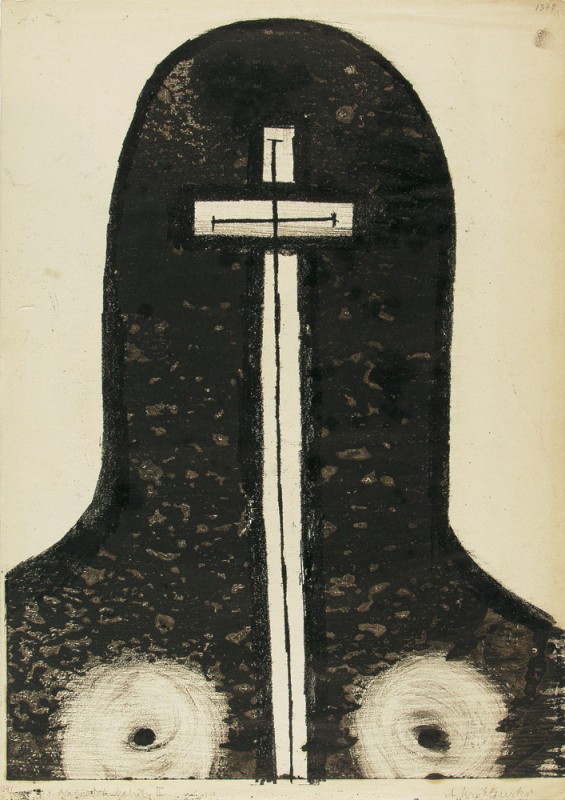Andrzej Wróblewski
born 1927 in Vilnius
Painter, art historian and critic. One of the major and most influential artists of Polish art of the 20th century. Wróblewski was initially associated with modern artists. In 1949, he turned to Socialist Realism and worked within the doctrine until it was abandoned. Later, Wróblewski returned to formal experimentation. His work encapsulates the experience of the generation that grew up during World War II (the series, “Executions”) and pursued the mission of building the world anew within the realm of communism. The artist died in 1957.
Wróblewski probably created the series of monotypes, until his sudden death in 1957, soon after his return from a trip to Yugoslavia and further. One of the main themes of the cycle is the transformation of the human figure and manipulation of the image of the human being: an insight into the organic interior or an attempt to make it fit within simple geometric shapes. The search for a new image of the human being, the deconstruction and reconstruction of the human figure – this is the most prominent thread running through Wróblewski’s figurative experimentation. Some of the works (e.g. “Woman’s Grave II”) revisit the forms of Balkan sepulchral art – graves with representations of human figures. The simple compositions of the monotypes carry an element of existential reflection and caricatural humour that stems from the simplification of form and the expressive quality of the pieces of artwork. The works are charged with a heavy emotional load, filled to the brim with a kind of melancholy, and express human solitude and the failed re-creation of the world after a catastrophe. The persistence of the theme of death combined with the artist’s untimely death triggered eschatological interpretations of the cycle as a harbinger of the imminent end.
